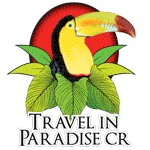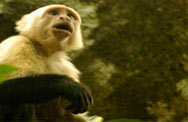|
|
: Undisputedly one of Costa Rica's foremost tourist attractions, the highly eruptive Arenal Volcano is the centerpiece of this new national park declared in October of 1994. In addition to including in the national park system what is currently one of the world's most active volcanoes, the area now under park service protection encompasses the watersheds of several rivers and streams that flow into Lake Arenal, the country's most important source of hydroelectric power.
The imposing Arenal Volcano rises in nearly perfect conical form out of the western end of the San Carlos plains. Its periodic eruptions of ash and molten rock, accompanied by thundering sonic blasts, are an unforgettable experience anytime, but become extremely spectacular after dark. When the light of day has dimmed, the glowing red igneous rocks ejected with each eruption trace fiery arches in the night sky before crashing down on the steep slopes and finally extinguishing themselves.
Columns of lava also push their way down the sides of the volcano and pieces of the advancing sections continually break off under the weight of new flows bearing down from above. At night, these falling pieces are visible as chunks of rolling red rocks, adding to the natural fireworks display between the frequent eruptions.
From the 600-meter elevation where visitors are allowed to approach atop a lava flow from the 1968 eruption, Arenal rises another 1000 meters to its 1,633-meter summit, and although the peak is still 3 kilometers away, it is definitely "in your face!"
There is little vegetation or wildlife to be seen in the immediate area of the main viewing site since the effects of the major devastating eruption of 1968 are only slowly being overcome. Nevertheless, this area offers a unique opportunity to witness the early stages of lava flow colonization by a handful of plant species adapted to the task. Farther away there are other areas which escaped direct damage and provide better wildlife viewing in the forested sections, however, as yet the park service does not maintain any well-marked trails in these areas, which include the dormant Volcano Chato to the southeast of Arenal.
Getting there: A bit of a long way from anywhere, Arenal National Park is most quickly reached from San José by taking the PanAmerican Highway west to the town of San Ramón and the road north through Angeles, La Tigra, and Chachagua to La Fortuna. Driving west out of La Fortuna, the road takes you 180 degrees around the volcano to the park ranger station.
There is public bus service from both San José and Ciudad Quesada to La Fortuna.
An alternative, and equally scenic, route for those coming from Guanacaste is to take the PanAmerican Highway to the town of Cañas and then drive up into the hills to the town of Tilarán and follow Lake Arenal around its northern shore to the base of the volcano.
Fishing: see Lake Arenal.
Climate: Being under the influence of Caribbean slope weather patterns, Arenal Volcano receives anywhere from 3.5 to 5 meters of rain per year. Even when it isn't raining, clouds often gather around the volcano's peak, obliterating a full view of the mountain. At lower elevations within the park (e.g., the viewing area at the volcano's western base), the temperatures are warm during the day, but can get chilly at night, especially if there is a breeze.
History: The settlers that colonized this region in the early part of the 20th century referred to Arenal Volcano as "the mountain" and apparently, despite its conical shape, did not realize it for what it is. Thus, when the quiescent volcano exploded on July 29, 1968, producing a cloud of hot volcanic gases and covering several square kilometers with lava, some 87 people living in the areas of Tabacón and Pueblo Nuevo lost their lives.
Since this tragic eruption (the first following at least 300 years of inactivity, according to some geologists), Arenal has remained active, but fortunately at a level posing little threat to visitors.
|
Travel Tips:
FAQs: You might be wondering too.
About CR
About weather
What to pack: click here to get ideas on what you really need to bring along.
What to wear: click here to get ideas on what to wear. Avoid mistaken clothes.
Our Specialty Your Best Travel, vacations Family Trips, Honeymoons, Educational Trip, Escorted Trip.
Honeymoon Beyond a romantic setting, a honeymoon in Paradise is a magical experience.
Family oriented Trip
: Is about experiencing fascinating cultures, family adventures, family tours, quality time together.
Incentives travels: Creative ideas, consulting services for a theme party or special event.
|










